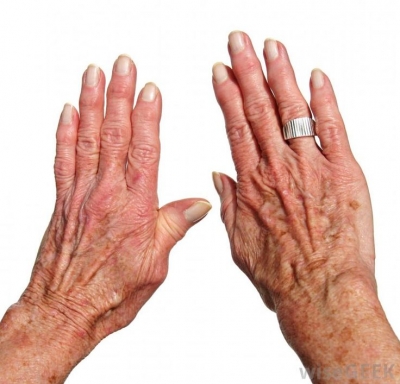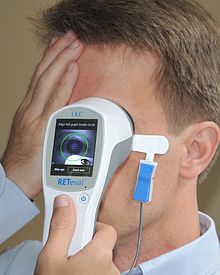How is vision tested?

When we see an object the light falls on the light-sensitive cells that form the retina. These send nerve impulses to the brain which ‘sees’ the picture or an image that is formed at the back of the eye. This is how we see the object.
The lens of our eye is very soft and its shape is altered by the ciliary muscle. These muscles control focussing in the eye and this alters the shape of the lens. Some people cannot focus on distant objects and some other on nearby things. In such cases the object appears blurred and we say that eye has a defect of sight.
For testing the eyes, the eye specialist makes use of a chart in which different letters in different sizes are written. Below these is written 6/36, 6/24, 6/18, 6/12, 6/ 9, 6/6 and 6/5 etc. Specialists ask the person under test to read the different letters or numbers on the chart and upto the row the patient reads the chart is marked as his eyesight. All these letters have a common digit of six. This indicates that this chart should be placed at a distance of 6 m or 20ft from the eye. If a person’s eyesight is 6/12, it shows that this man can read this letter from a distance of 6m while a man of normal sight can read it from a distance of 12 metres.
In this way the eye specialist tests the sight and prescribes a number. For example if a person has a number -2D, it indicates that he cannot see the distant objects clearly and he needs a concave lens for his spectacles that brings light rays together. Similarly if the number is in plus sign, he cannot see nearby objects clearly and needs a convex lens that diverge light rays before they can enter the eye. The letter ‘D’ stands for dioptre which is the unit of power of a lens. Two dioptre mean a lens of 50 cm focal length.
If a person is not able to see clearly both the near and distant objects, he needs spectacles of compound lenses. If someone delays the use of spectacles his sight may further deteriorate. In modern techniques, computers are used to ascertain the unit of power needed for individual patients.















 Cholesterol is an organic compound belonging to the steroid family and occurring either in a free state or as esters of fatty acid in practically all animal tissues. The molecular formula for cholesterol is
Cholesterol is an organic compound belonging to the steroid family and occurring either in a free state or as esters of fatty acid in practically all animal tissues. The molecular formula for cholesterol is . In a normal man it is about 0.3 percent of his average weight. It is the starting material from which the body produces bile acids, steroid hormones and pro-vitamin substances in the body. It is used by our body to help the digestive system as well.
. In a normal man it is about 0.3 percent of his average weight. It is the starting material from which the body produces bile acids, steroid hormones and pro-vitamin substances in the body. It is used by our body to help the digestive system as well.